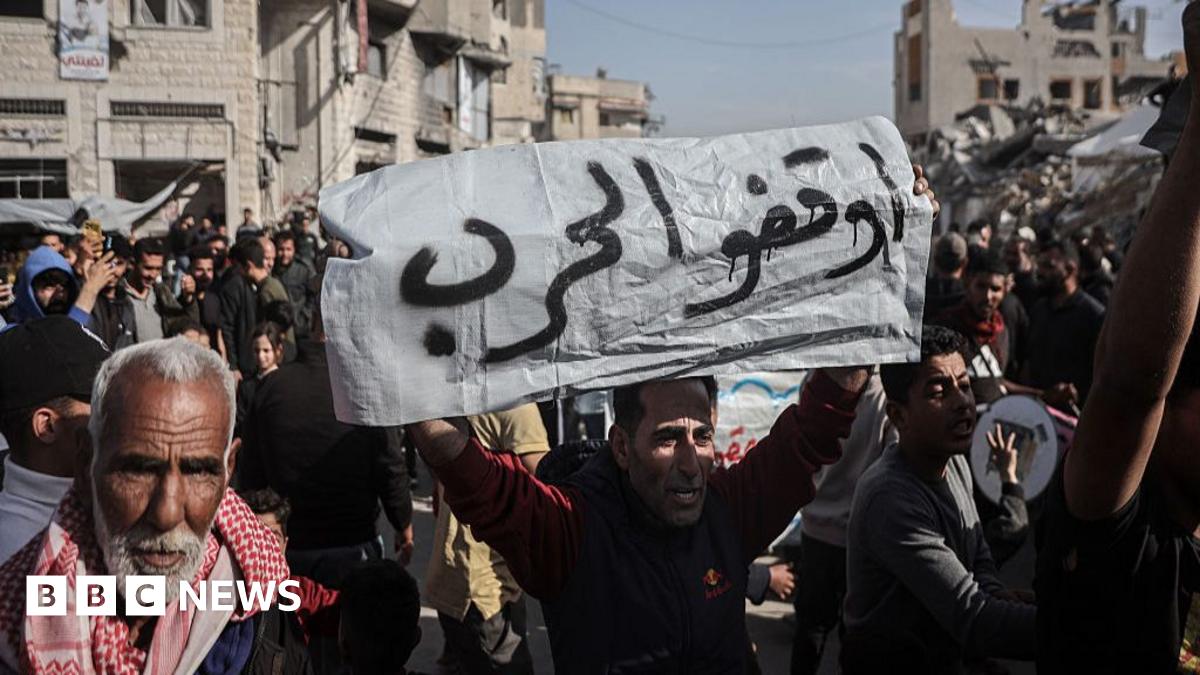Gaza Protests: Hamas' Weakening Grip?
The ongoing protests in Gaza raise critical questions about the strength and stability of Hamas' rule. While the group maintains a firm grip on power, cracks are beginning to show, fueled by economic hardship, a growing disillusionment among the population, and increasing internal dissent. These factors suggest a potentially shifting landscape in Gaza, though the extent and consequences remain uncertain.
Economic Hardship Fuels Unrest
Gaza's economy is in dire straits. Years of blockade, internal divisions, and conflict have left the population struggling with high unemployment, poverty, and a lack of basic necessities. The recent protests, while varied in their specific demands, are largely driven by widespread economic frustration. The inability of Hamas to alleviate this suffering is significantly eroding its legitimacy in the eyes of many Gazans.
- High Unemployment: Unemployment rates in Gaza consistently hover above 40%, leaving a large segment of the population without viable means of support.
- Lack of Infrastructure: The Gaza Strip suffers from a crippling lack of infrastructure, impacting essential services like electricity, water, and sanitation.
- Limited Access to Aid: The blockade continues to severely restrict the flow of goods and humanitarian aid into Gaza, exacerbating the economic crisis.
These issues are not merely economic; they have profound social and political consequences. The desperation felt by many Gazans is a fertile ground for unrest and challenges to Hamas' authority.
Growing Disillusionment with Hamas' Rule
Beyond economic hardship, there's a growing sense of disillusionment with Hamas' leadership. Years of rule have not brought about the promised improvements in living standards or a resolution to the ongoing conflict. This disillusionment is manifested in various forms, including:
- Increased Criticism: Gazans are increasingly vocal in their criticism of Hamas' policies and performance, both online and in the streets.
- Civil Society Activism: Despite the risks, civil society groups are increasingly active in advocating for reform and holding Hamas accountable.
- Youth Activism: Young Gazans, who have known little else but hardship and conflict, are becoming increasingly outspoken in their demands for change.
This growing discontent poses a significant challenge to Hamas, forcing the group to contend with a population increasingly unwilling to tolerate the status quo.
Internal Divisions Within Hamas
Reports suggest increasing internal divisions within Hamas itself. Differing views on how to address the economic crisis and the ongoing conflict are creating friction within the leadership. These internal conflicts weaken the group's ability to respond effectively to the growing unrest and could further destabilize its rule.
The Future of Gaza Remains Uncertain
While the current protests do not necessarily signal the imminent collapse of Hamas' rule, they represent a significant shift in the political landscape of Gaza. The combination of economic hardship, growing disillusionment, and internal divisions creates a volatile situation with unpredictable consequences. The international community must closely monitor the situation and consider the implications for regional stability. The future of Gaza remains uncertain, but one thing is clear: Hamas' grip on power is facing unprecedented challenges.
Further Reading:
Note: Remember to replace the example links with actual, relevant links from reputable news sources and research institutions. This will significantly enhance the credibility and SEO value of your article.

